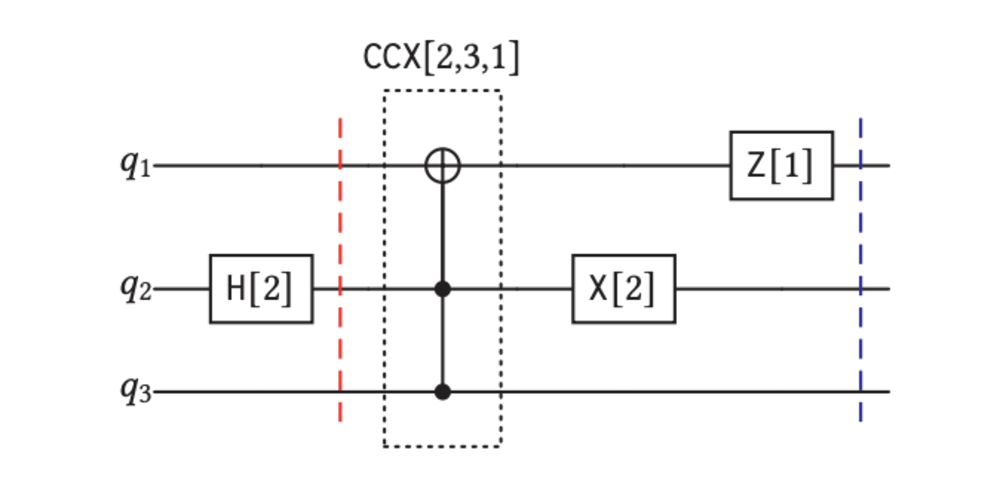Insider Brief
- Researchers from INSAIT, ETH Zurich, and the University of Oxford developed qblaze, a quantum circuit simulator that efficiently handles large-scale sparse quantum systems on conventional computers.
- The simulator organizes quantum data as sorted arrays of non-zero values, enabling faster, cache-efficient computation and nearly linear scaling across 180 CPU cores—up to 120 times faster than previous sparse simulators.
- In benchmarks, qblaze factored a 39-bit number using Shor’s algorithm with just two CPUs and is open-source, offering a scalable platform for testing quantum algorithms in realistic settings.
A team of researchers from INSAIT, ETH Zurich and the University of Oxford has developed qblaze, a new quantum circuit simulator that can efficiently handle large-scale, sparse quantum systems using conventional computers. The system marks a step forward in how scientists test and debug quantum algorithms before deploying them on actual quantum machines.
According to the study published in Proceedings of the ACM on Programming Languages, qblaze enables simulations of quantum systems that were previously out of reach for existing tools. It does this by exploiting sparsity—a mathematical property of many quantum algorithms where most elements in the system’s state are zero. By storing and computing only the non-zero values, qblaze significantly reduces both memory use and computational time.
The research team, led by Hristo Venev, Thien Udomsrirungruang, Dimitar Dimitrov, Timon Gehr and Martin Vechev, reports that qblaze can run certain algorithms up to 120 times faster than previous sparse simulators, while scaling efficiently across as many as 180 CPU cores. These improvements enable developers to test more complex quantum circuits without requiring specialized hardware.

How qblaze Works
Quantum computers promise to accelerate problem solving in cryptography, chemistry and machine learning, but current devices, often referred to as Noisy Intermediate-Scale Quantum (NISQ) machines, remain too small and error-prone for practical applications. Because of this, much of the research in quantum software still happens on classical computers that emulate quantum behavior.
Simulations allow researchers to observe quantum states that can’t be directly measured on hardware. They also let developers run deterministic tests, an essential feature because quantum algorithms are inherently probabilistic. But the price of accuracy is high: the number of variables needed to represent a quantum state doubles with every added qubit. For example, a 40-qubit system requires over a trillion complex numbers to represent, quickly overwhelming even powerful supercomputers.
The research team’s innovation lies in how it organizes and processes sparse quantum data. Traditional simulators use hash tables, which are structures that can quickly look up data but struggle to coordinate across multiple CPU cores. Hash tables also scatter data in memory, hurting performance on modern processors.
In contrast, qblaze represents the quantum state as a sorted array of index–amplitude pairs, keeping non-zero values contiguous in memory. Trying to explain this in simple terms: Instead of scattering data across random locations like a hash table, the simulator lines up only the meaningful values in order. This arrangement allows modern processors to access data sequentially and efficiently, making better use of the CPU’s cache and avoiding the costly delays that occur when threads compete for the same memory.
Ultimately, according to the team, this design improves cache efficiency and makes it easy to divide work among cores without heavy synchronization. Each core processes its own memory block, avoiding the performance bottlenecks that come from multiple threads competing for access to shared data.
The system also implements a set of scalable algorithms for the basic operations of quantum computing — single-qubit gates, multi-qubit phase or permutation gates and measurement. These are the mathematical equivalents of logic gates in classical computing but operate on quantum superpositions. The system groups these operations to minimize sorting overhead and reduce memory passes, further boosting performance.
Benchmarks and Performance
In tests using the QASMBench benchmark suite, qblaze performed competitively with the best dense-state simulators, while dramatically outperforming other sparse simulators, according to the study. On a single CPU core, it ran up to two orders of magnitude faster than the simulator introduced by Jaques and Häner in 2021. When distributed across many cores, qblaze maintained nearly linear scaling, showing that it can take advantage of large multi-core CPUs commonly found in modern servers.
The team also demonstrated that qblaze was the only simulator capable of handling the “binary welded tree” benchmark — a notoriously difficult quantum algorithmic test — on 37 qubits. That result underscores its ability to simulate realistic quantum workloads that strain the limits of traditional methods.
The development of qblaze could reshape how scientists and engineers develop quantum algorithms. Until now, testing large quantum programs required access to specialized cloud-based quantum simulators or early prototype devices, both of which are costly and limited. With qblaze, much of this work can now be done locally on multicore CPUs.
This capability is especially useful for debugging algorithms that depend on structured sparsity, such as those used in number theory, optimization, and quantum chemistry. By extending the scale of feasible simulations, qblaze helps bridge the gap between today’s theoretical research and tomorrow’s practical quantum computing applications.
According to information shared by the research team, qblaze was also tested on Shor’s algorithm, where it successfully factored a 39-bit number (549,755,813,701) — reportedly the largest number ever factored by a quantum circuit simulator. The result matched the previous record achieved by the specialized shorgpu emulator, but qblaze required only two CPUs with 90 cores each, compared with shorgpu’s 2,048 GPUs, underscoring its efficiency and scalability.
Technical Approach
The paper details two key techniques that underpin qblaze’s performance:
- Sparse Array Encoding: Instead of storing all possible quantum amplitudes, qblaze stores only the non-zero ones in sorted order. This eliminates redundant computations and improves spatial locality, meaning the data needed for each operation is stored close together in memory.
- Parallel Transform Algorithm: The researchers designed a “merge-apply-partition” method that applies quantum gates using only two passes over memory, compared to five in earlier designs. This compact approach allows qblaze to scale efficiently with the number of processors, maintaining balanced workloads and minimizing idle time.
Together, these innovations allow qblaze to perform large, complex operations—such as applying multiple controlled quantum gates—in parallel with high cache efficiency.
Future Work
While qblaze demonstrates impressive performance gains, its advantages are most pronounced for circuits that exhibit sparsity. Dense circuits — where most amplitudes are non-zero — will still require enormous amounts of memory and computation, limiting the system’s efficiency.
The authors also note that qblaze is designed primarily for shared-memory systems. Distributed-memory implementations, such as those used in large-scale clusters or supercomputers, will require further adaptation.
In future work, the researchers plan to expand qblaze to support hybrid quantum-classical workflows, integrating it with high-level quantum programming frameworks. They also suggest exploring GPU acceleration to extend its scaling beyond CPUs.


















